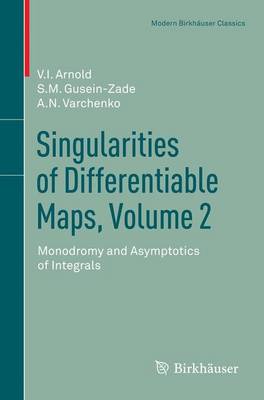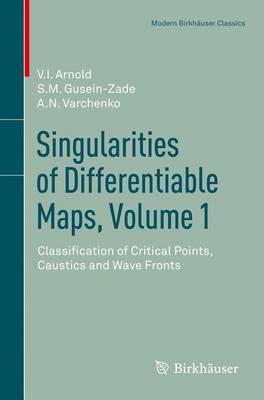Modern Birkhauser Classics
2 total works
Singularities of Differentiable Maps, Volume 2
by Elionora Arnold, S. M. Gusein-Zade, and Alexander N. Varchenko
Singularities of Differentiable Maps, Volume 1
by V. I. Arnold, S. M. Gusein-Zade, and Alexander N. Varchenko
Singularity theory is a far-reaching extension of maxima and minima investigations of differentiable functions, with implications for many different areas of mathematics, engineering (catastrophe theory and the theory of bifurcations), and science. The three parts of this first volume of a two-volume set deal with the stability problem for smooth mappings, critical points of smooth functions, and caustics and wave front singularities. The second volume describes the topological and algebro-geometrical aspects of the theory: monodromy, intersection forms, oscillatory integrals, asymptotics, and mixed Hodge structures of singularities.
The first volume has been adapted for the needs of non-mathematicians, presupposing a limited mathematical background and beginning at an elementary level. With this foundation, the book's sophisticated development permits readers to explore more applications than previous books on singularities.

